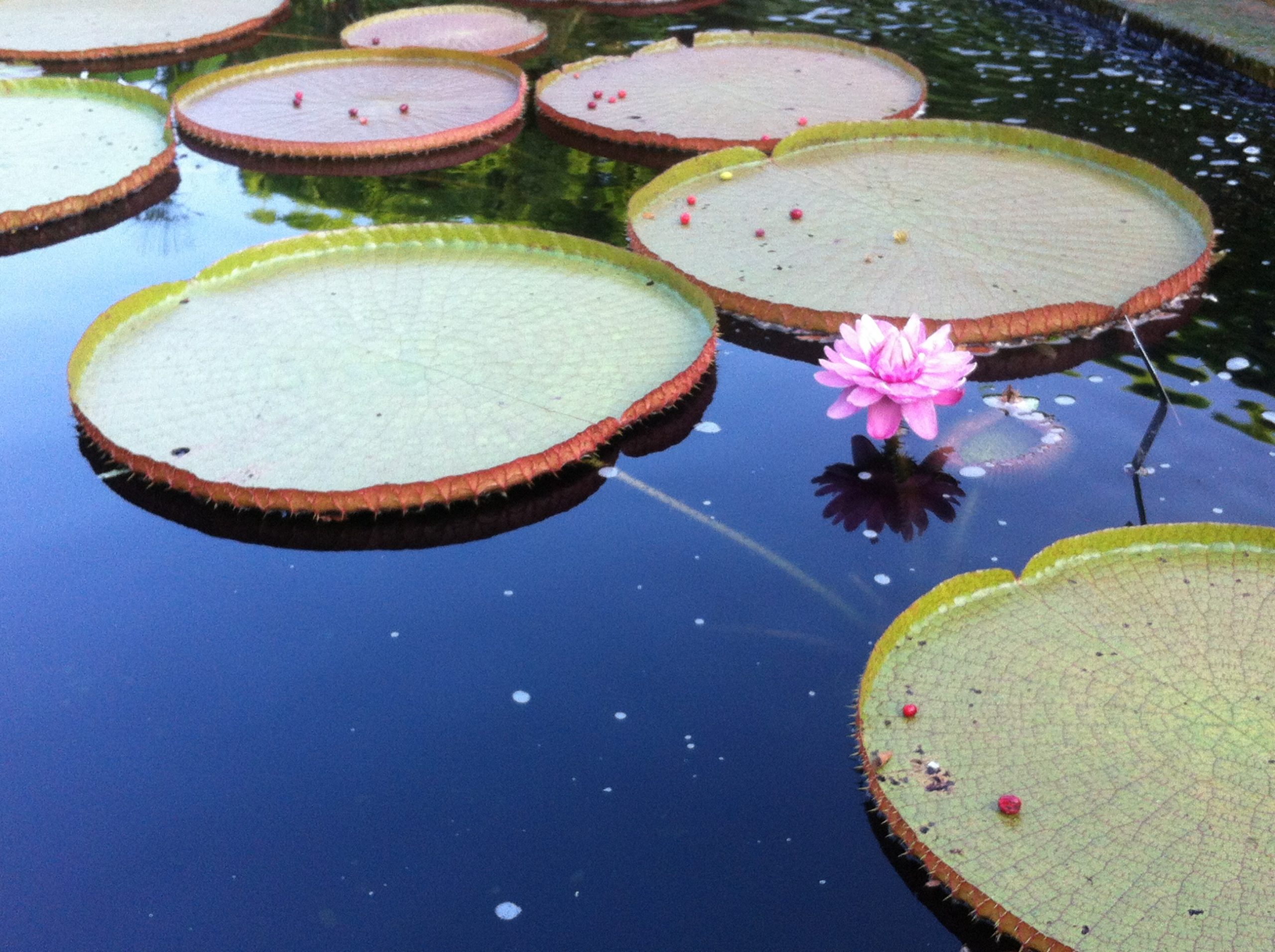When you need to shake the city off your big shoulders, I recommend a day trip to the Chicago Botanic Garden. This place is sort of a hidden gem, since it’s out in the burbs, but it’s actually been ranked #7 among the 55 Stunning Botanical Gardens You Really Need to See Before You Die. I had never been until recently, when a girlfriend and I hopped on our bikes and headed north. The Chicago Botanic Garden, located in Glencoe, is about 25 miles north of downtown. It’s easily accessed by car and public transportation as well. We chose to ride the North Branch Trail through the Forest Preserve District of Cook County in order to be fully immersed in the nature of our city in a garden.
What to See at the Chicago Botanic Garden?

In order to navigate the 385-acre garden, we got a personalized itinerary from my friend Phil, who works at the visitor’s center. At the top of his must-see list is the Japanese Garden, and I fully agree. The Sansho-En is a garden of three islands, two of which mere mortals may stroll. The islands were designed by Dr. Koichi Kawana, who designed Japanese gardens in St. Louis and Denver as well. In my research of his work, Chicago Botanic Garden executives discuss how Kawana didn’t draw plans for the placement of plants and rocks; instead he studied them individually and placed each stone based on which side or texture he thought should face the point of view of visitors to the garden. These composed views are so masterful, one must be reminded that they are intentional. This is the philosophy of a Japanese garden, to interpret nature in a stylized presentation, as opposed to letting nature run wild. The effect is contemplative and ideal.
Leave the worries of the working world behind as you cross the Arched Bridge to Kaiunto, the Island of the Auspicious Cloud. The same theory goes back to 17th century Sansho-en, intended as a retreat for feudal lords. More specifically, the Shoin House was an escape for samurai to focus on meditation and poetry. This was by far my favorite aspect of the garden, and I hope to have one of my own someday. The 23-tatami-mat house, which is how you talk size in Japanese construction, was first built in Japan, as were all the wooden structures in the Japanese Garden here. Then it was dismantled and sent to Chicago. This was facilitated by the fact that no nails were used to construct the house, true to its Middle Age origins. The house’s walls are open to allow views of the surrounding nature, and the samurai’s desk–my favorite aspect of the house–is built into one of these walls looking directly onto the moss garden for inspiration.
A Place for a Slower Pace
Continue to Seifuto, the Island of Clear, Pure Breezes, across the Zigzag Bridge, reminiscent of our Chicago Detours logo. The zigzag design is intended to force the flaneur to slow down and consider new views of the garden. On Seifuto, you get a closer look of Horaijima, the Island of Everlasting Happiness. This smallest of the three islands is intended to represent paradise and is reserved for the gods and the nature they have given us. Considering the beauty evident on the first two islands, I can only marvel at what must be reserved on Horaijima.

So as not to discuss the garden without mention of the flowers, pictured above is the Victoria Regia waterlily, a flower rarely in bloom. Its life cycle is just two days; the pink color seen here denotes this flower is in day two, the male stage, of its life. These lilies are found in the Heritage Garden. Other highlights of the Chicago Botanic Garden include the Waterfall Garden from which the above view of the Japanese Garden is taken, and the deck of the Garden View Cafe, where you can sit beneath the willows and enjoy not just the view but also sustainably produced and seasonal items.
— Elizabeth Tieri, Tour Guide












